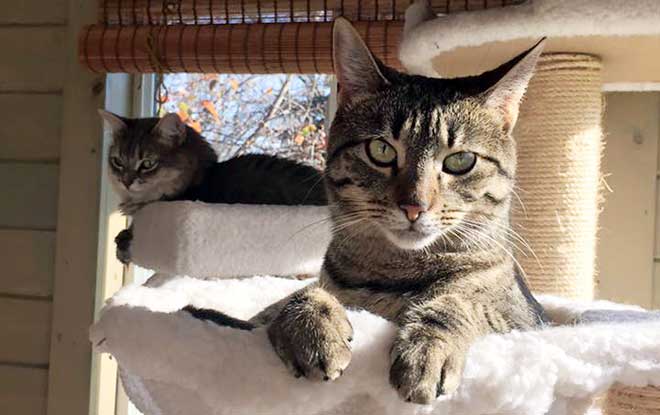Blitz News Digest
Stay updated with the latest trends and insights.
Paws and Effect: Decoding Your Cat's Quirky Behaviors
Unravel the mysteries behind your cat's quirky behaviors and discover what they're really trying to tell you!
Why Does My Cat Knead? Understanding This Adorable Behavior
Kneading is a common and adorable behavior observed in cats, often characterized by the rhythmic pushing and pulling of their paws on soft surfaces. This behavior, sometimes referred to as 'making biscuits,' can be traced back to kittenhood when cats kneaded their mother's belly to stimulate milk production. As they grow older, this action becomes a comforting ritual that evokes feelings of safety and warmth associated with their early life.
Besides nostalgia, kneading can also serve various practical purposes for adult cats. It is a way for them to mark their territory, as they have scent glands in their paws that release pheromones. Moreover, kneading can indicate contentment and relaxation, often seen when your furry friend is feeling particularly cozy and happy. Understanding why your cat kneads can deepen your bond and appreciation for their quirky behavior, making it all the more charming.

The Mystery of Cat Zoomies: Why Do They Happen?
The phenomenon of cat zoomies is one of the most fascinating yet perplexing behaviors exhibited by our feline friends. Often characterized by sudden, frantic bursts of energy, cat zoomies typically occur during specific times of the day, especially in the mornings or evenings. Several factors contribute to this playful behavior, including a cat's natural hunting instincts and the need to release pent-up energy. After a long day of napping, it's common for cats to engage in a series of rapid dash-and-pounce actions, which can be both amusing and alarming for their human companions.
Beyond instinctual behavior, cat zoomies can also be influenced by environmental factors such as stress relief or the presence of stimulating toys. If your cat experiences boredom or anxiety, these wild bursts can serve as a much-needed outlet for their emotions. Additionally, it's important to ensure that your home environment provides opportunities for physical activity and mental engagement, as this can help minimize excessive zoomie episodes. Understanding the reasons behind this quirky behavior allows pet owners to better appreciate their cats' unique personalities and needs.
Decoding Cat Communication: What Does That Meow Really Mean?
Cats are known for their independent nature, but they possess a rich language of communication that often goes unnoticed. Understanding what a cat's meow means requires keen observation, as these sounds can vary in tone, pitch, and length. For example, a soft, high-pitched meow might indicate a friendly greeting, while a series of short, rapid meows could express excitement or demand attention. By paying attention to the context, pet owners can decode the message behind each meow and respond appropriately.
Moreover, it's important to note that cats often tailor their meows specifically for their human companions, creating a unique form of communication. Studies have shown that cats may alter their vocalizations based on how their owners react to different sounds. For instance, if a meow results in immediate attention, cats may develop a more pronounced or urgent meow to get what they want. Understanding this dynamic can deepen the bond between you and your feline friend, making for a more enriching companionship.